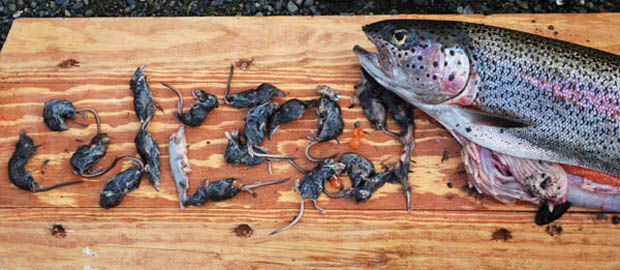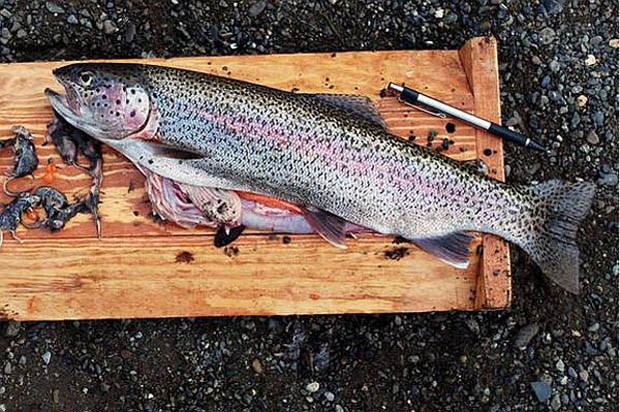The Shrew Fly:
[dropcap]I[/dropcap] read a post the other day by Deneki, a travel company with the unique distinction of having its own lodges. One on South Andros, Bahamas another on the Dean River in Canada and the third, Alaska West which is located on the Kanektok River in Western Alaska.
Deneki always has meaningful posts, not just seasonal fishing reports, but worthwhile tips and tactics on everything from leader construction to flies that catch bonefish, steelhead and big Alaskan rainbows.
Having been to Alaska more than a dozen times over the last 35 years and having both the experience of luxury accommodations and poor man’s “luxury” tent accommodations, I can assure that the Mouse (Shrew) Fly will make any trout with size as crazy as a cat hanging around catnip. The trick with using the mouse fly is to make it active in a current, mending it so it’s a natural float. If you lose it’s natural water ride, no self respecting dolly or rainbow will give it a second look. Get the ride right and smash, bam; almost every time.

A rainbow trout with a stomach full of shrews! Togiak National Wildlife Refuge, Alaska. Photo courtesy of the U.S. Fish and Wildlife Service.
Here’s what Deniki’s Alsaka West team had to say about the mouse fly:
It’s no secret how much we love fishing mouse patterns for big Alaskan rainbow trout. We do a lot of it and, as odd as it may sound, it is our most productive method for catching trout on the surface. With a conveyor belt of salmon flesh and eggs throughout an already short growing season, these trout are looking for a meal, and that size 16 mayfly is just not going to do it.
However, we are often asked if ‘trout really feed on mice?’ Or if our mouse fly is just acting as an ‘attractor to an extremely opportunistic fish?’ Due to the fact that we release every trout we see, it has been difficult for us to prove that these trout do indeed consume mammals in the wild, until now.
Just this past summer, researchers from the U.S. Fish and Wildlife Service conducted some research on rainbow trout from our river in the Togiak National Wildlife Refuge. While collecting their sample, one fish was deemed a mortality capture, and as standard protocol, the fish was opened up to examine the stomach contents. What did they find? Not 1, not 2, but 19 (with some counts at 20) partially digested shrews in its stomach! Shrews are a smaller mammal on average to a typical mouse, and while there are some feeding differences, they are very similar in appearance to a mouse. Certainly similar enough to justify our mouse patterns! The best part? The trout only measured out to 19 inches in length! Certainly a good trout, but not quite trophy caliber in Alaska standards!
There’s your reason to fish a mouse fly in Alaska, all 19 of them.







